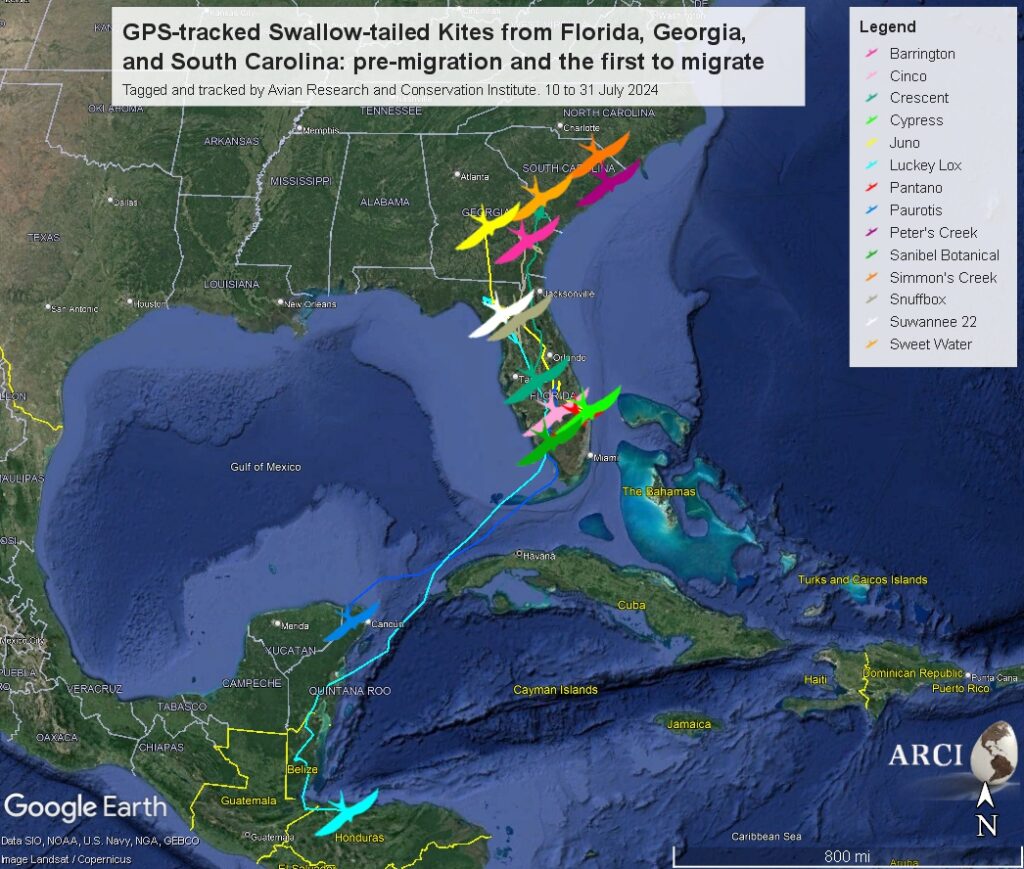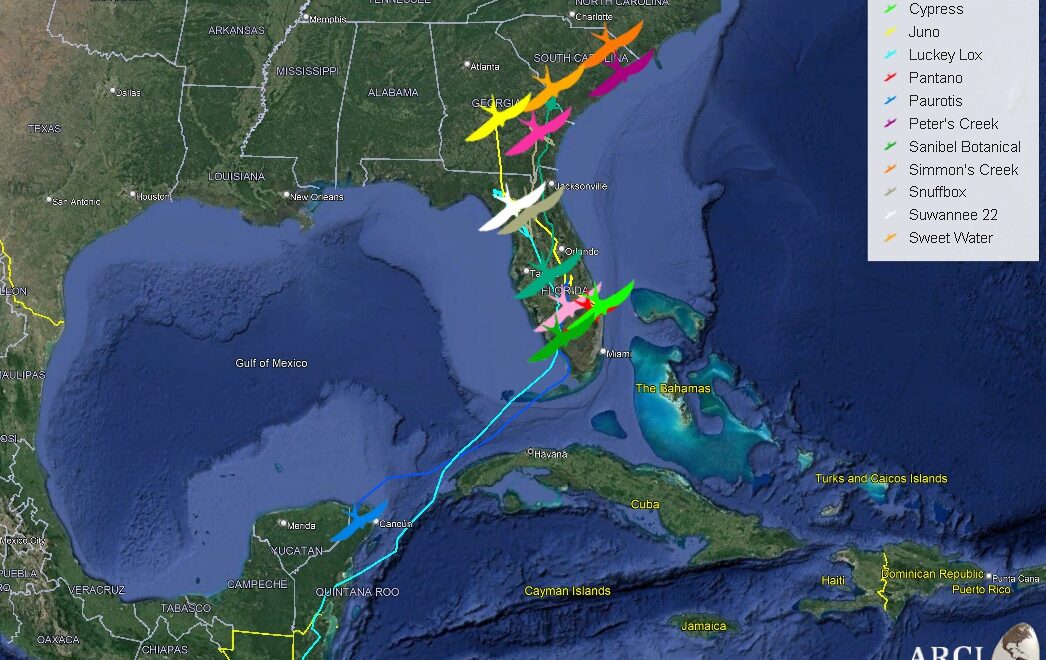
This is an exciting time as Swallow-tailed Kites take the riskiest “jump” of their lives-across the Gulf of Mexico. Hurricanes and unfavorable winds can be deadly and they must take the time to rest and put on fat reserves to handle the unknown risks ahead of them. We have tracked Swallow-tailed Kites on this journey since the late 1990’s. We have seen that a kite can only survive over the ocean without food, water, and rest for three days. Most of the birds below are tracked with CTT GSM-GPS transmitters that communicate with the cell network, thus when they are out of range, we have to wait until they get within cell range to get their data uploads.
We will be sharing maps of four additional GPS-tracked Swallow-tailed Kites tagged by our partner at Orleans Audubon Society. The following updates on GPS-tracked birds include the 14 Swallow-tailed Kites ARCI has tagged and tracked from Florida, Georgia and South Carolina through various projects, partnerships and funding. We will be sharing updates on their migration to South America.
Simmon’s Creek is about 57 miles north, up the Great Pee Dee River in South Carolina from where his nesting area was.
Peter’s Creek has been along the Black River in South Carolina.
Sweet Water is on the Savannah River in Burke County, Georgia.
Crescent, from Jasper County, South Carolina has started south through Georgia and is now on the Peace River near Bartow, Florida.
Snuffbox Canal had been on the Altamaha River in Georgia and started south to Florida on 24 July and is now in Gainesville, Florida.
Barrington is spending time in Tattnall County, Georgia.
Sanibel Botanical spent pre-migration near Lake Okeechobee and has started south. Her last location was 26 July from the Florida Panther National Wildlife Refuge. We assume that she has left Florida and is in a remote place without cell towers to upload data. We are hopeful that she will check in as she moves south.
Luckey Lox started south after going to her pre-migratory prep in north Florida on 9 July. She was the first GPS-tracked Swallow-tailed Kite to leave the U.S.A on 14 July. We JUST got the data upload on 31 July (17 days later) that she made it, what a relief! She flew across the Gulf of Mexico and passed the west tip of Cuba, making landfall in Quintana Roo, Mexico. She found a 12-day stopover site in the Tapir Mountain Nature Reserve in central Belize (without cell coverage). She is also the farthest south of the GPS-tracked Kites, along the coast of Honduras.
Cypress and Pantano remain in Palm Beach County, Florida on Environmental Resources Management (ERM) properties.
Juno flew from Palm Beach County to northern Florida during pre-migration and has continued north to Georgia. She is on the Altamaha River where she spent pre-migration last year too.
Paurotis from the Florida Panther National Wildlife Refuge moved north of Lake Okeechobee for pre-migration. She left Florida two days after Luckey Lox on 16 July from Cape Sable in the Everglades. She arrived in northern Quintana Roo, Mexico and has been stopping over for the last 12 days about 30 miles west of Cancun, Mexico.
We are in the middle of the U.S annual Swallow-tailed Kite population monitoring window. Please share your kite sightings with us here: Kite Survey


Leave a Reply